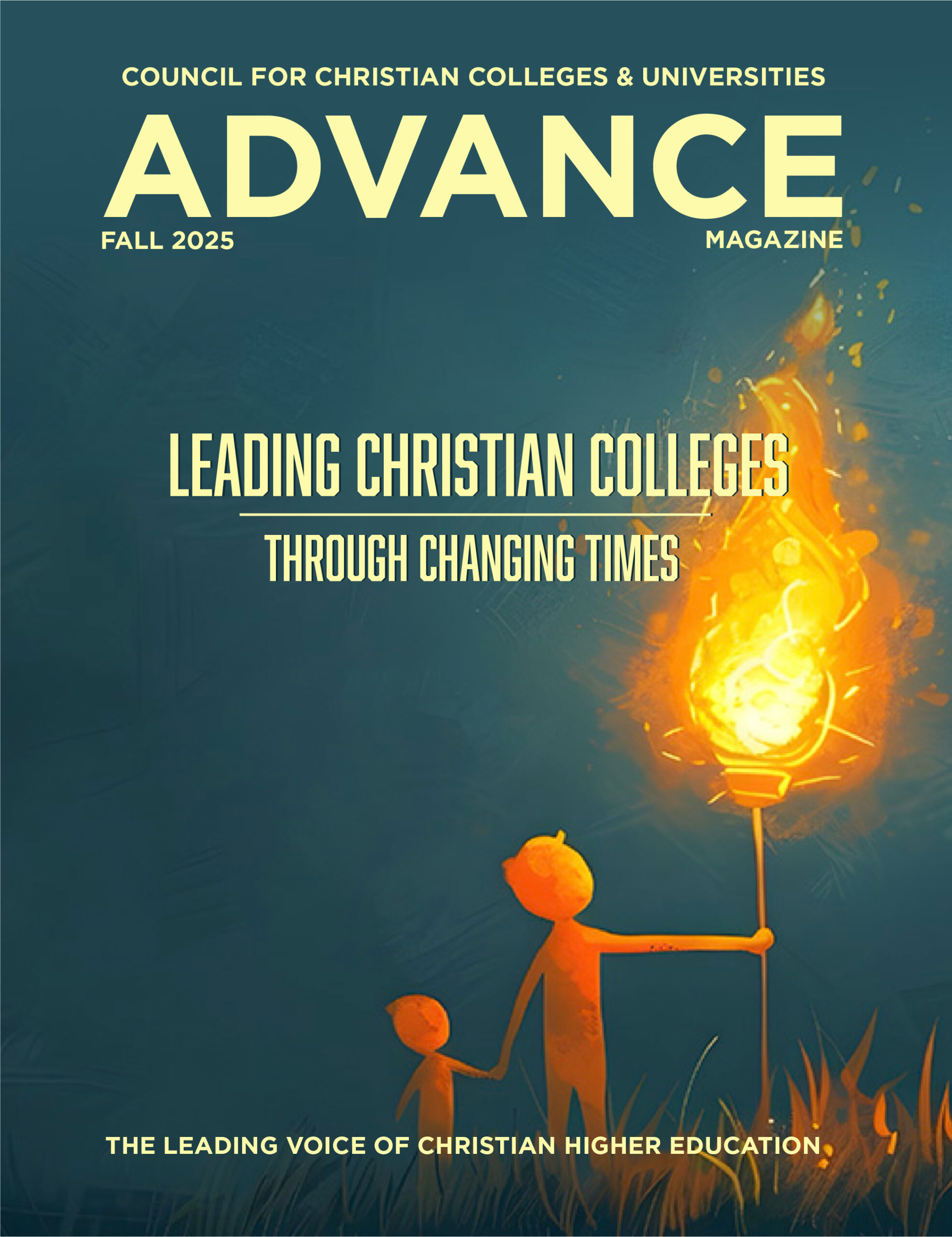Magazine
The word “innovation” conjures up images of a new and better future. The pandemic allowed us to witness innovation firsthand, whether in vaccines created in record time or in shifting our own campuses’ ability to be online, in-person (while still meeting pandemic guidelines), or a hybrid of both. Disruption caused by disease, emergencies, or disasters often fuels innovation and invention. Experiencing hardship also spurs human beings to utilize adversity for positive change.
We admire and celebrate innovation. We know it when we see it. But creating a new future is hard work. That’s why I want to explore types of innovation — and obstacles to achieving it — before laying out a road map for creating and maintaining an innovative culture that I think will be vitally necessary for Christian higher education.
LOOKING TO THE PAST FOR INSPIRATION
On its website, the History Channel has an article exploring 11 of the greatest innovations that changed the world. Here are just a few:
- The printing press. Communicate to the masses and you change the world. We have seen this most recently in the blessing and curse that is the Internet.
- Steel fueled the industrial revolution and built modern cities.
- The electric light. All it takes is a power outage for us to remember a less workable, bygone era. The innovation of wires to power early light bulbs led to electrical wiring paving the way for all other electrical innovations.
- This changed medicine forever. Imagining a world without antibiotics is easier in this moment because of the pandemic. Clearly, the ability to fight infection has improved the human condition without measure.
“We can do it,” I think as I read this list. But it also makes me wonder: What will be some of the innovations of the future that our students need to be prepared for through their time studying at our colleges and universities?
For that, I found the insights from Honeywell to be helpful. You might recognize the Honeywell name from your thermostat, but it is also a premier innovation laboratory. The leaders at Honeywell recently predicted that the innovations of tomorrow will include air taxis, quantum computing through an open cloud system, robotic cargo unloading, real-time data making work more efficient, a new generation of control system technology, 3D-printed engine parts, and machine learning to fight cyber-attacks. What opportunities for our students!
WHAT DEFINES INNOVATION?
Innovation is happening all around us, including on our campuses. How do we keep up the momentum and implementation to make innovation our culture of the future? The Center for Creative Leadership has drawn a helpful distinction between creativity and innovation: “Creativity is the ability to generate novel and useful ideas, while innovation is a successful implementation of creative ideas.”
Is all innovation the same? In 2018, People Matters identified three different kinds of innovation: incremental, adjacent, and transformational. Incremental innovation is improving something we already do — certainly important to pursue. Adjacent innovation is adding something new to something we do that is already core to our business — like online education in addition to on-campus education. Transformational innovation can be disruptive and involves the creation of entirely new businesses that cater to new markets. For example, think of Amazon’s creation of Amazon Web Services (AWS), its cloud server, which was outside its original business model of selling books and other products.
In higher education, our institutions have been successful at incremental and adjacent innovations that will lead or have created new revenue or efficiencies. Take a moment with your senior campus leaders to mark your success so far. Ask and record the answers to this question: Since the pandemic, what incremental or adjacent innovations has our institution adopted that have generated new revenue, new efficiencies, or the potential for both? You will be encouraged.
FACING THE INHIBITORS OF INNOVATION
While innovations occurred in the midst of the pandemic’s disruption, an innovation culture must continue and grow. Higher education will continue to feel disruption even after the pandemic finally ends, and that disruption must be used to fuel further innovation. As the People Matters article suggests, organizations need to go from “grazing” around innovation to creating an intentional, integrated, and optimized culture for innovation. How do we make innovation the DNA of Christian higher education?
Harvard Business Review identified 10 common innovation inhibitors that I suggest would be valuable to review with your leadership teams, deans, and department chairs. For each one, think about the extent to which it applies to your campus (never? sometimes? often?):
- Our focus on short-term results drives out ideas that take longer to mature.
- Fear of cannibalizing current business prevents investment in new areas.
- Most of our resources are devoted to day-today business so that few remain for innovative prospects.
- Innovation is someone else’s job and not part of everyone’s responsibilities.
- Our efficiency focus eliminates free time for fresh thinking.
- We do not have a standard process to nurture the development of new ideas.
- Incentives are geared towards maximizing today’s business and reducing risk.
- Managers are not trained to be innovation leaders.
- Managers immediately look for flaws in new ideas rather than tease out their potential.
- We look at opportunities through internal lenses rather than starting with customers’ needs and problems.
How did you score? Is there is room for improvement? What are practical next steps?
BUILDING A LASTING CULTURE OF INNOVATION
The statements themselves create the guide to new behavior. Create within each department, or within the university, a team whose focus is developing long-term strategic ideas to implement. Do not allow fear of undermining current ways of doing things to prevent the surfacing of new ideas. Reward people who develop and implement an innovative idea. Plan regular retreat time for groups to shift from an “efficiency focus” of daily routines to a “fresh thinking” focus.
Do not allow critique and criticism to dominate idea sessions. One idea is to create a process where red cards and green cards are used during meetings. Anyone in a meeting can good-naturedly raise a red card on another team member who names the flaws in a new idea before naming the potential. Raise the green cards to affirm suggested ideas.
Get your students involved. Create student innovation task forces. Ask your students for their ideas as your loyal, engaged, and self-interested “customers.” Form small groups of innovative students who will regularly be an advisory group to departments and administrative leaders. Ask students to think about how their needs could be met better by the university.
Finally, look outside your campus. Identify the most innovative companies in your immediate locale or from your board of trustees and do informational interviews on how they have created innovative cultures in their organizations. Perhaps imbed some of your leaders into business environments to influence habits and future thinking.
The future of Christian higher education depends on the attitude “We can do it.” We have done it, and with God’s guidance and grace, we will.
Shirley V. Hoogstra is the president of the CCCU.


